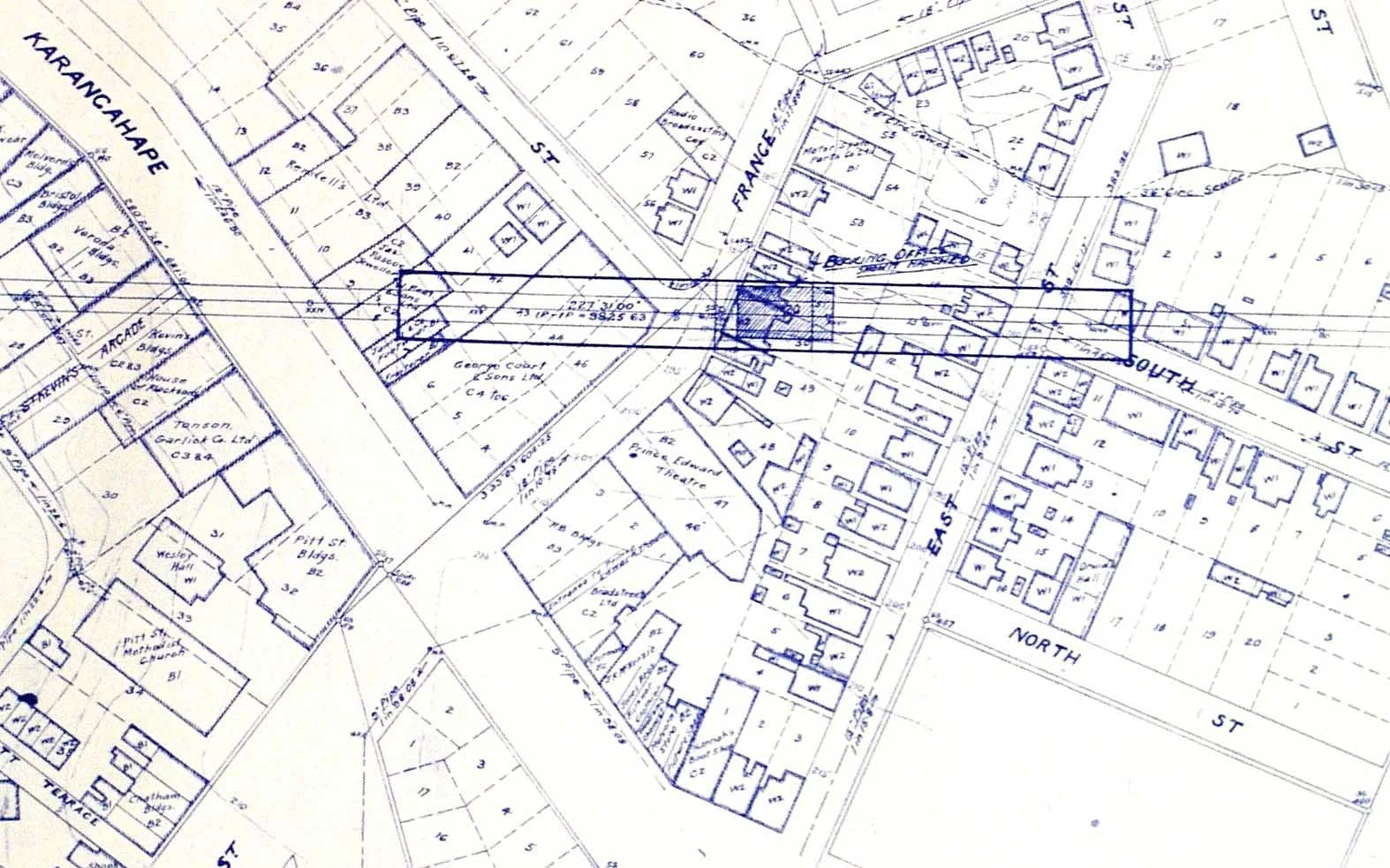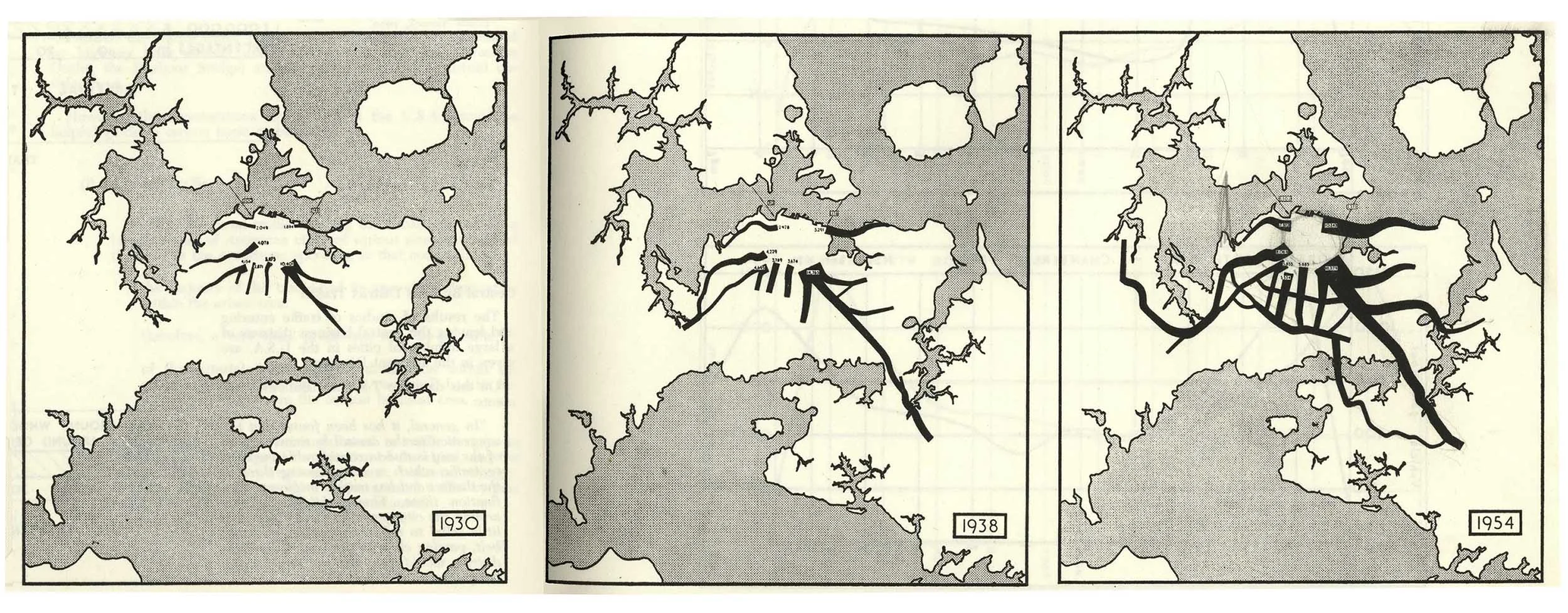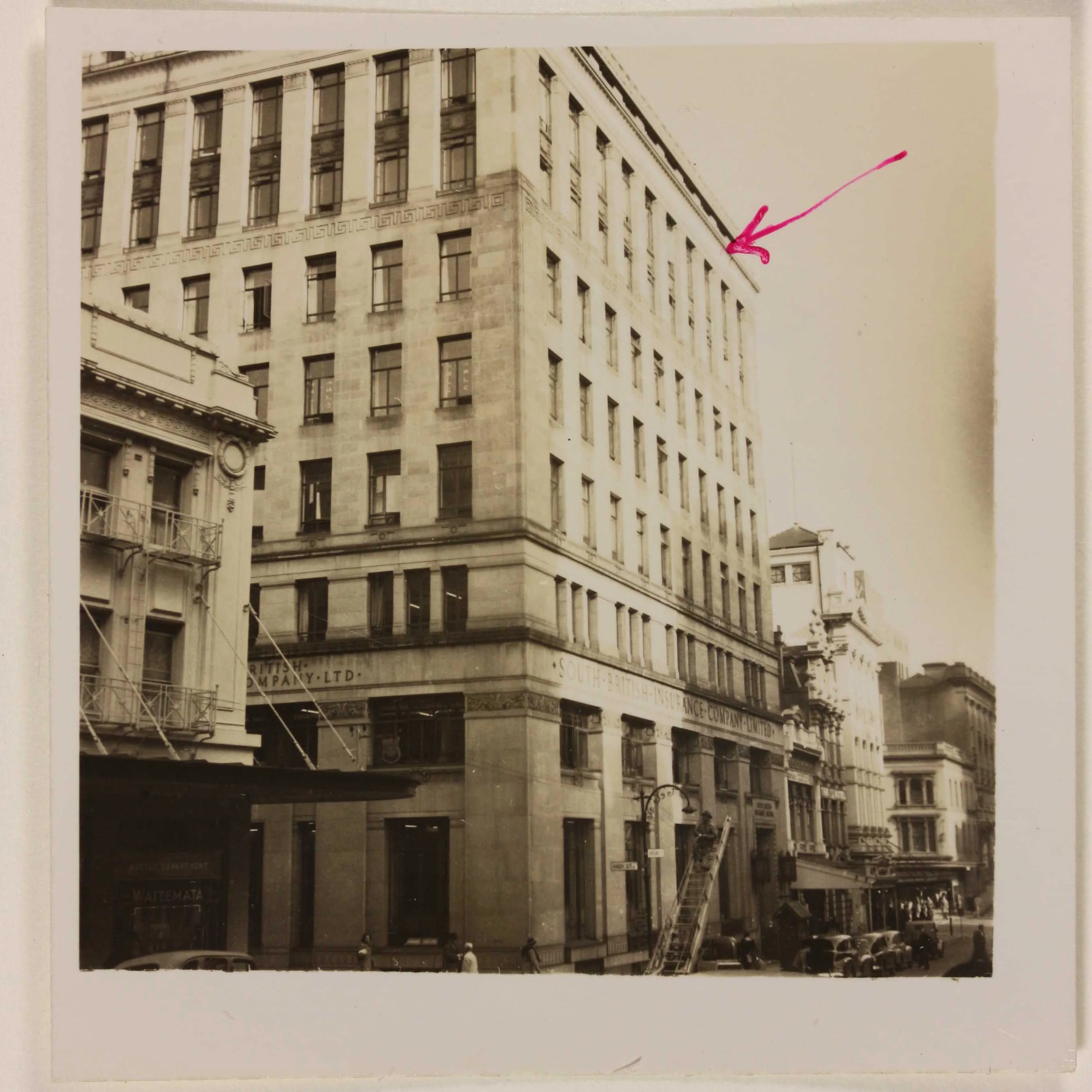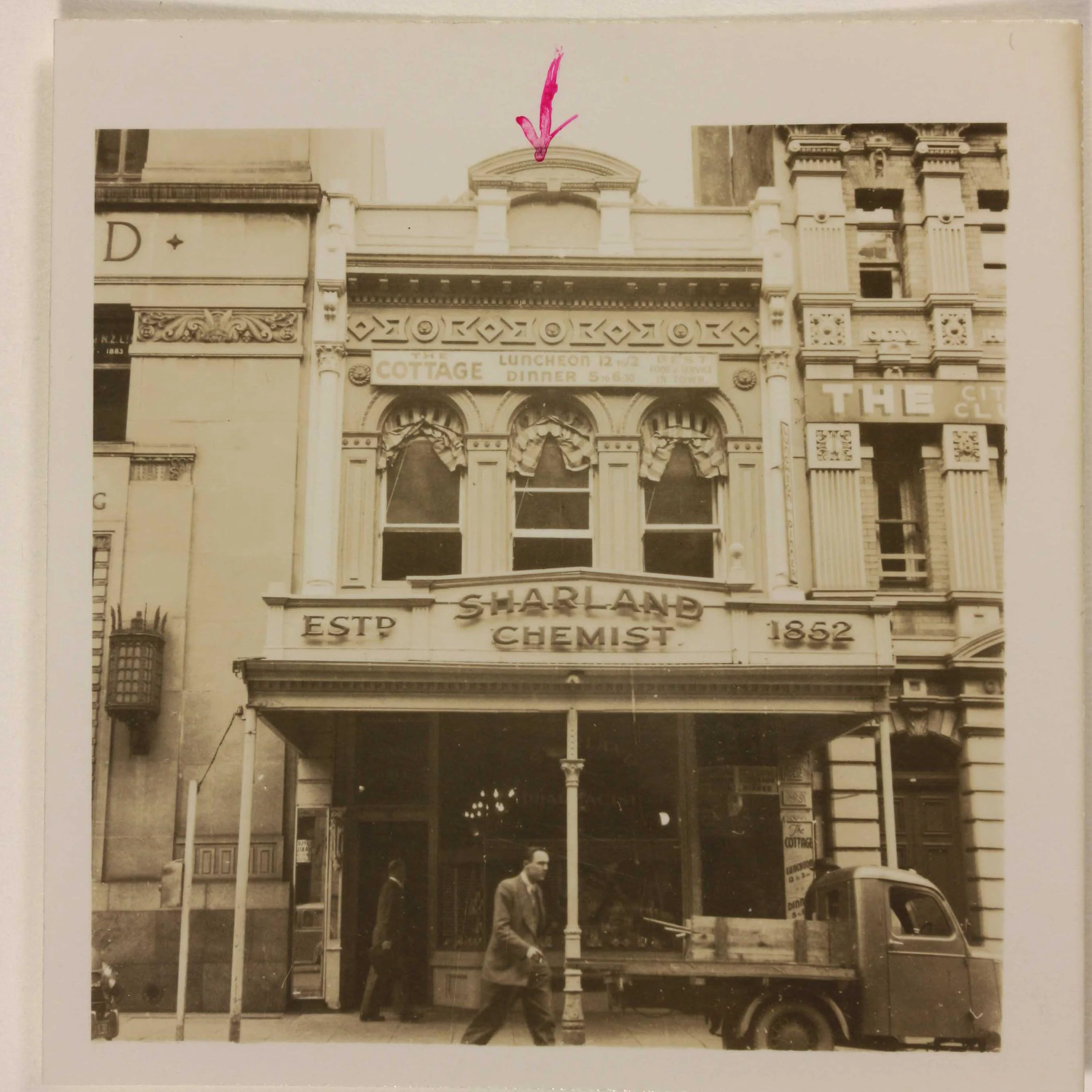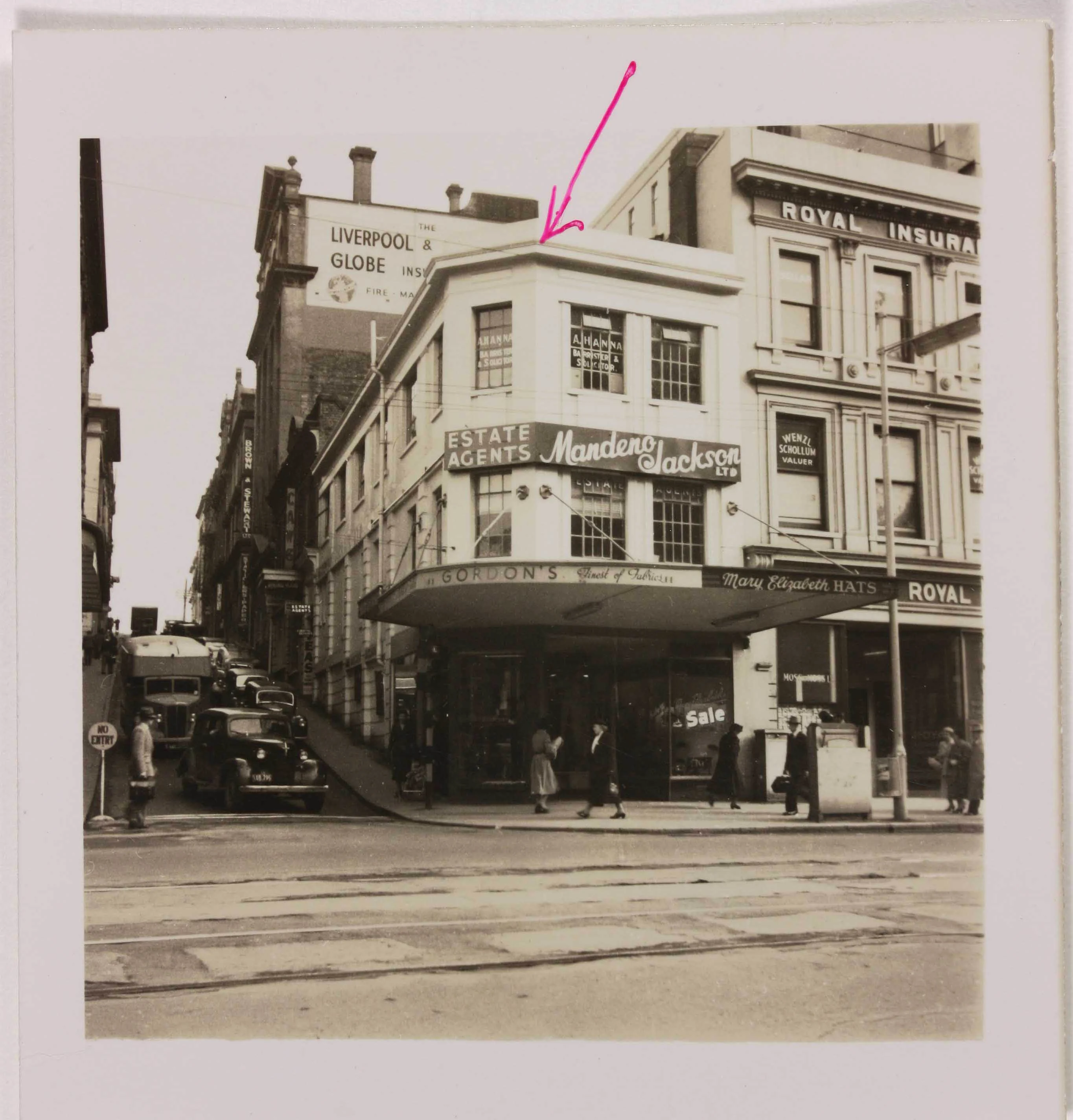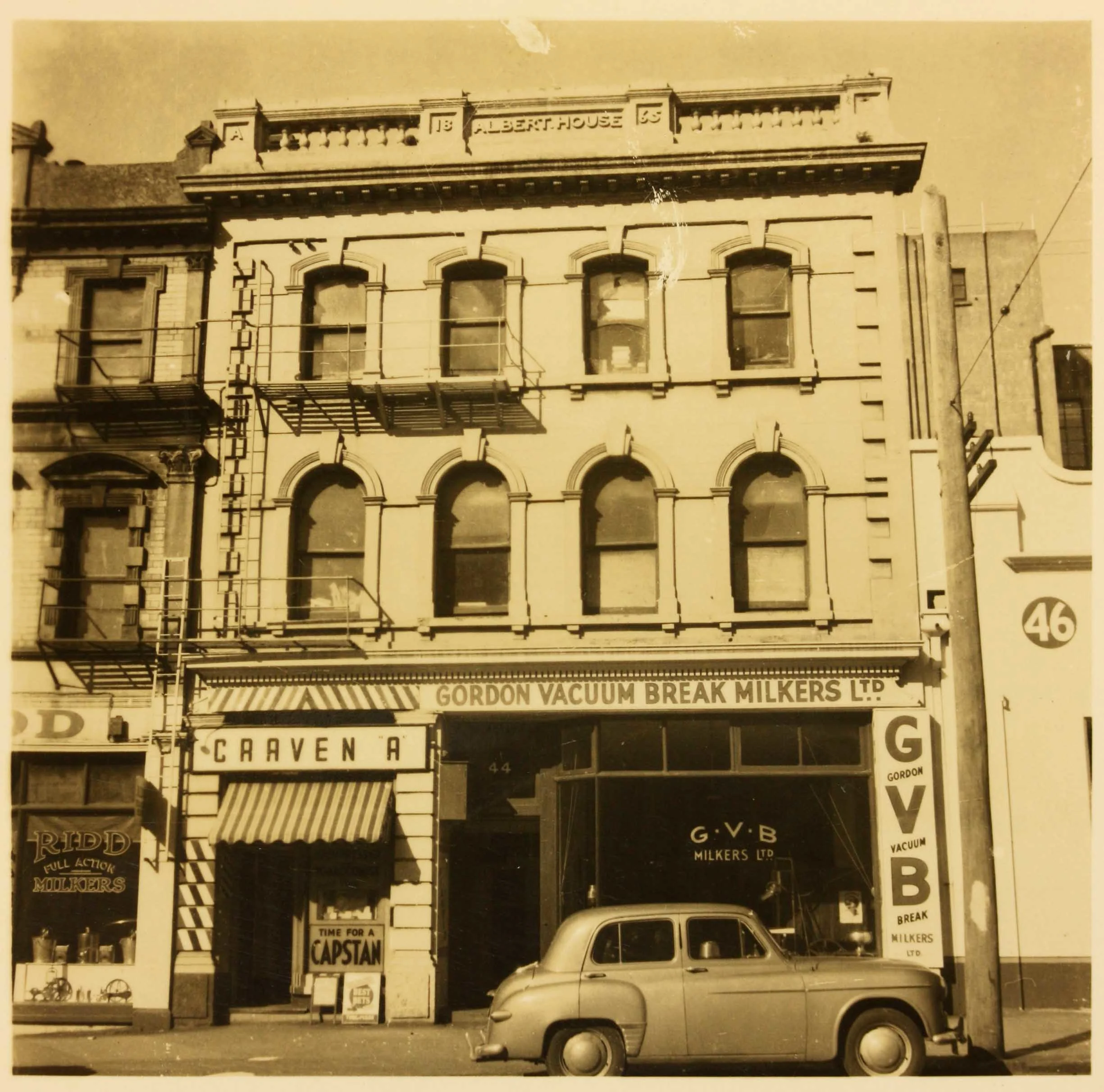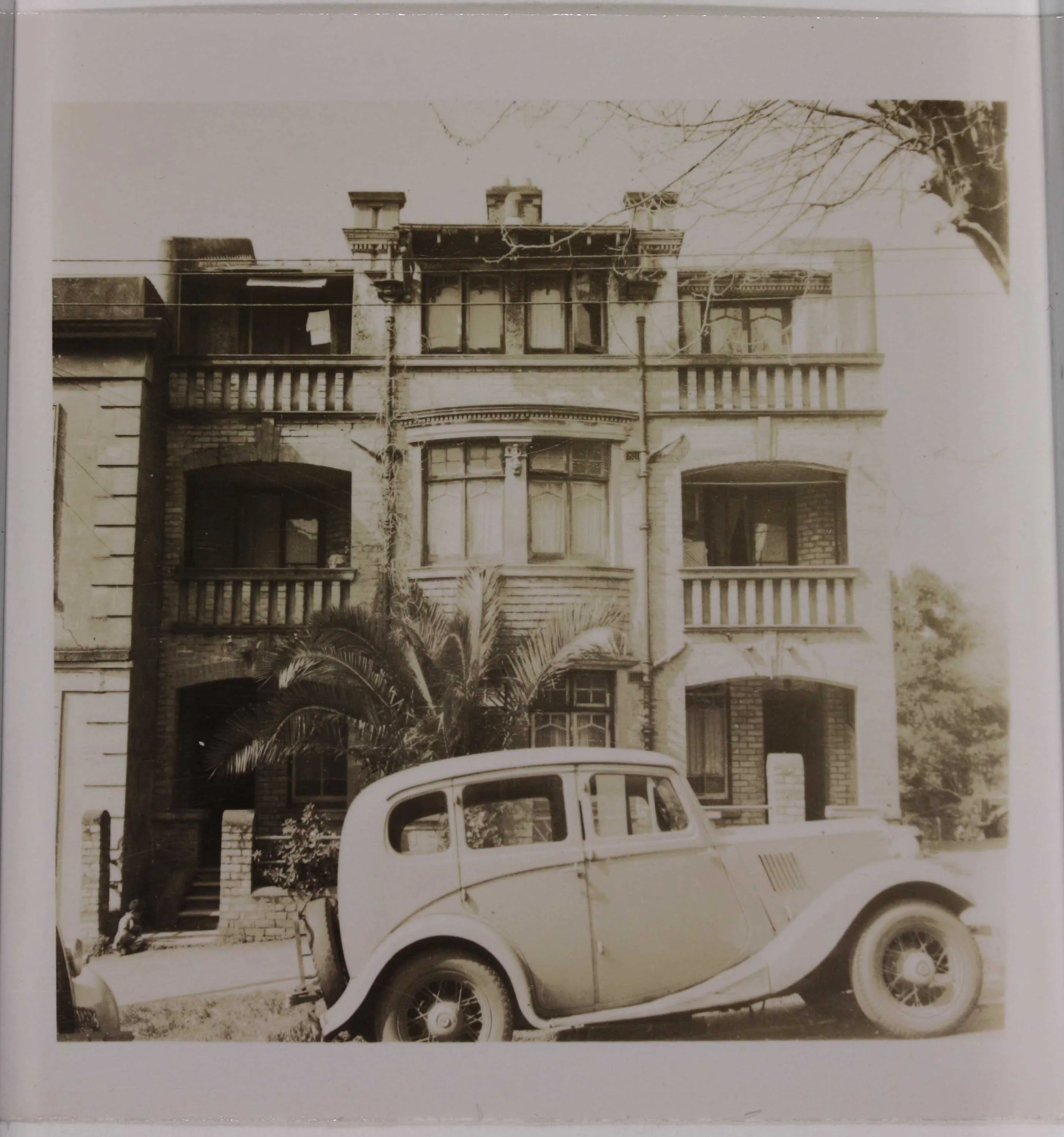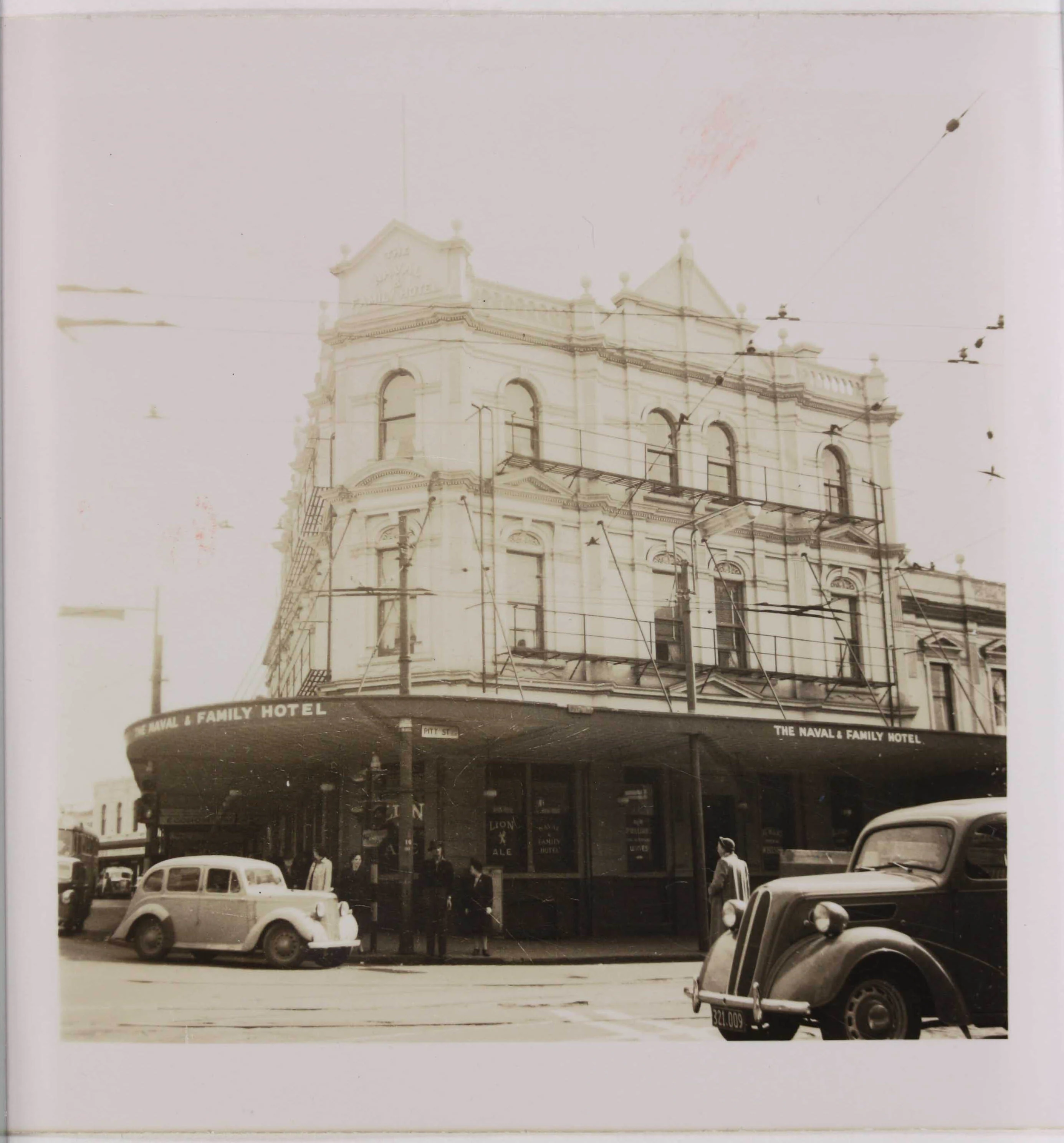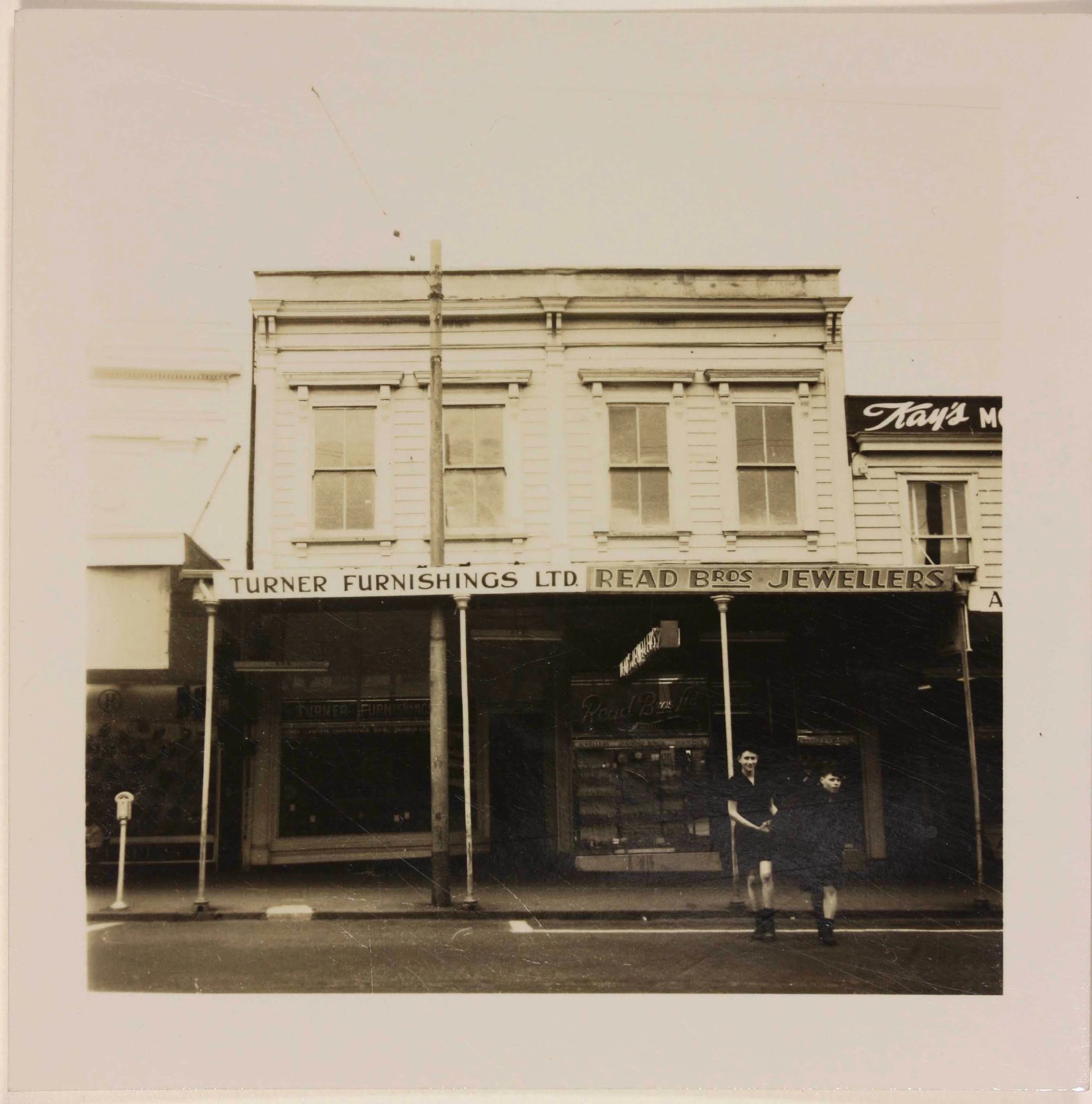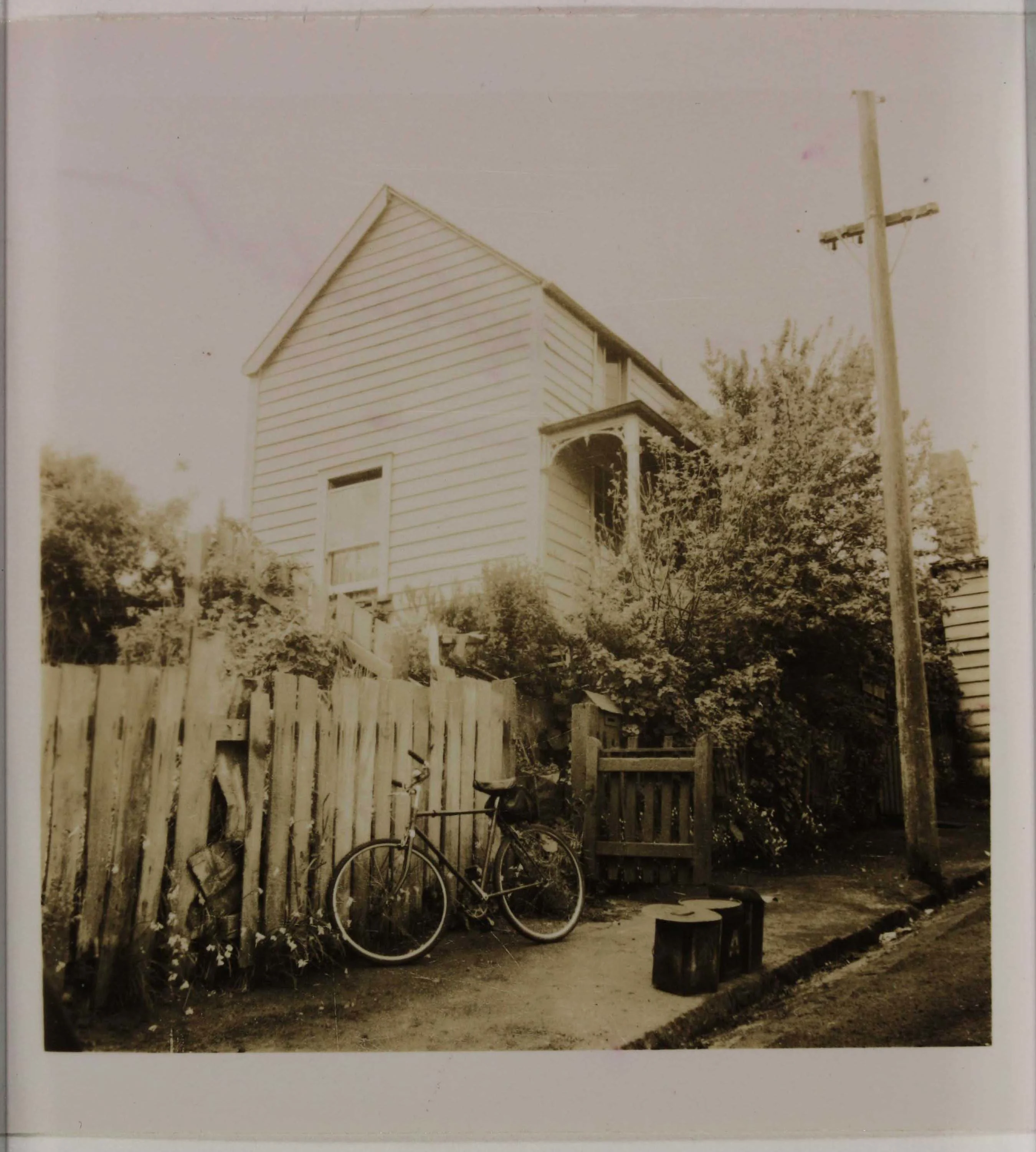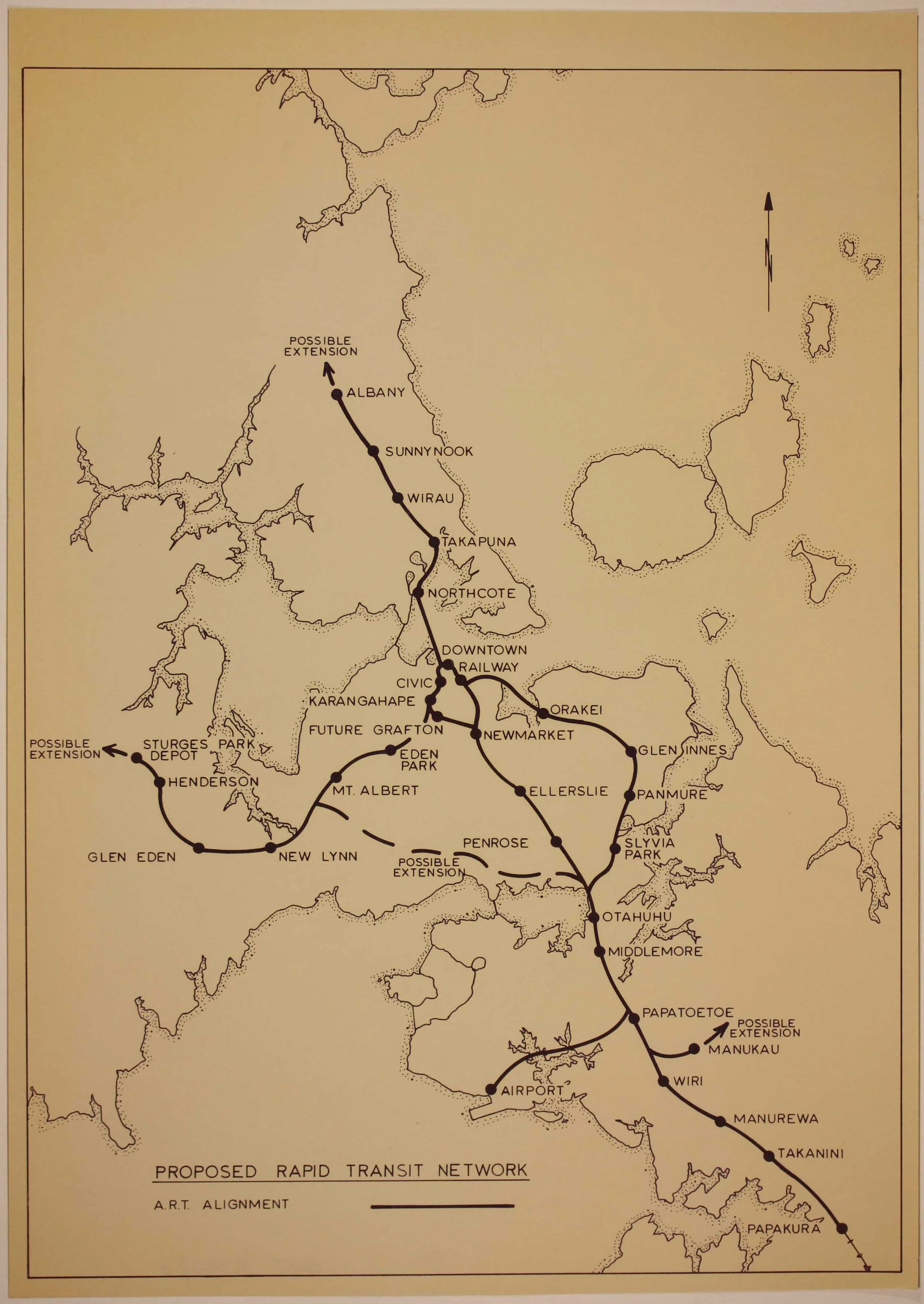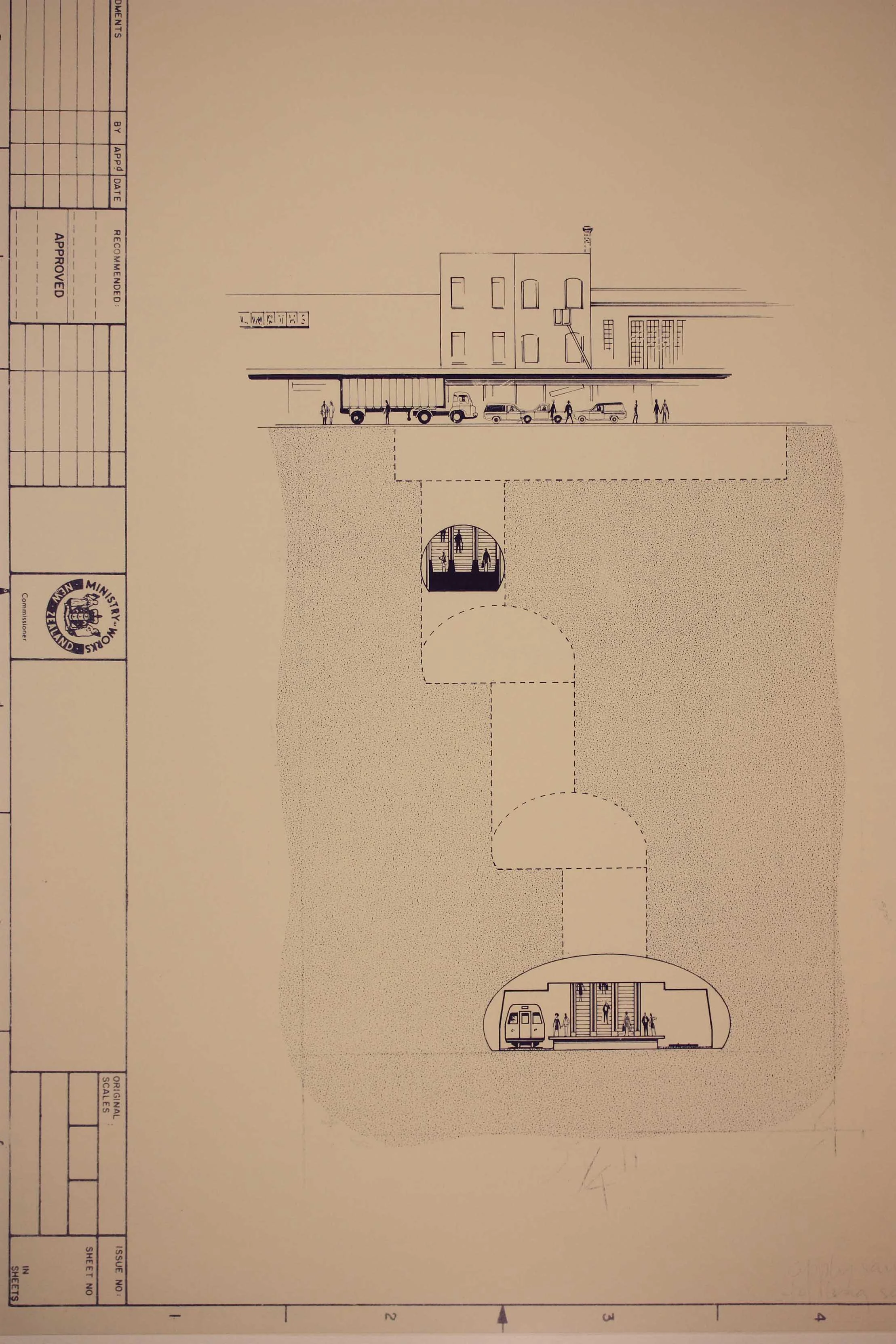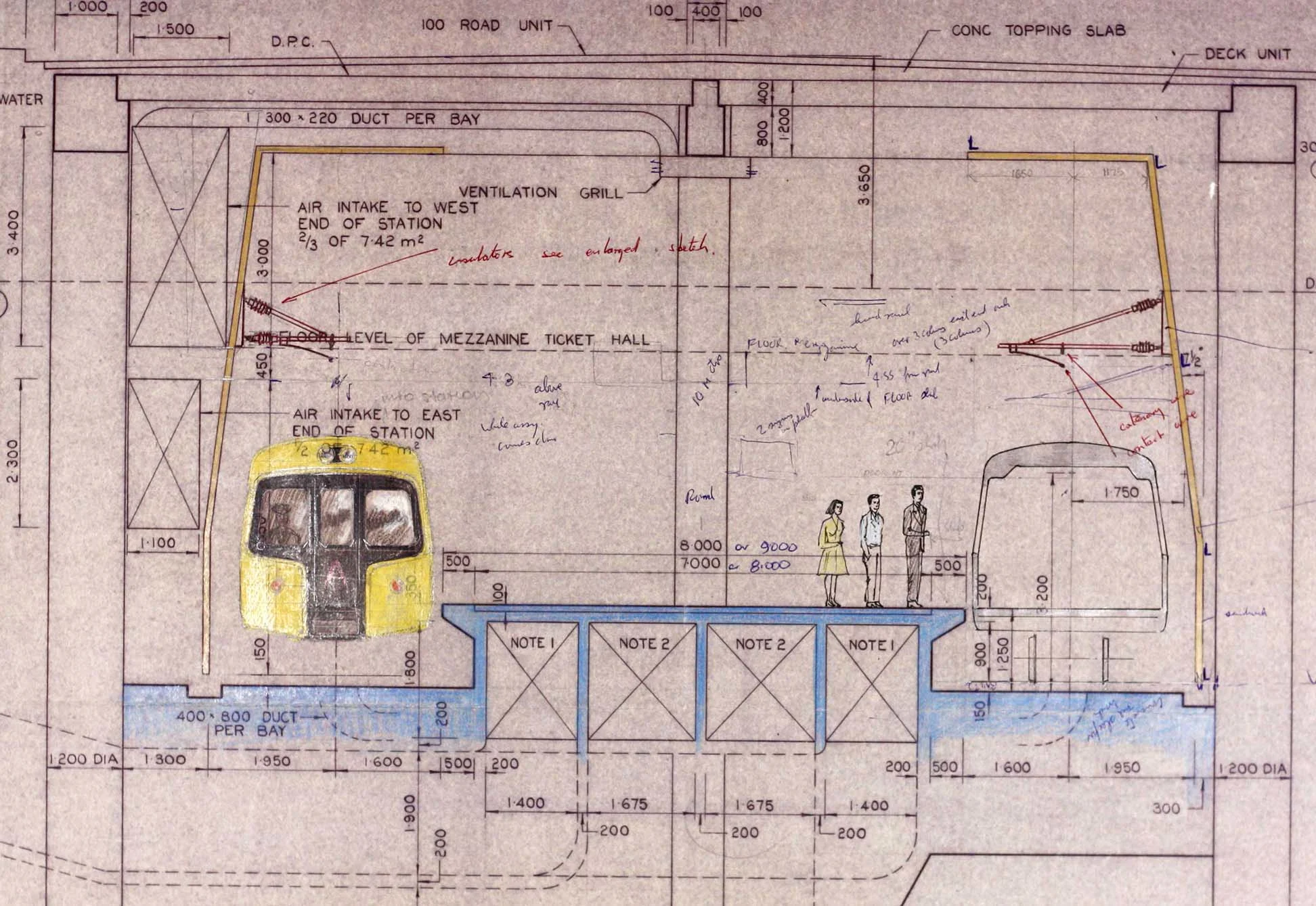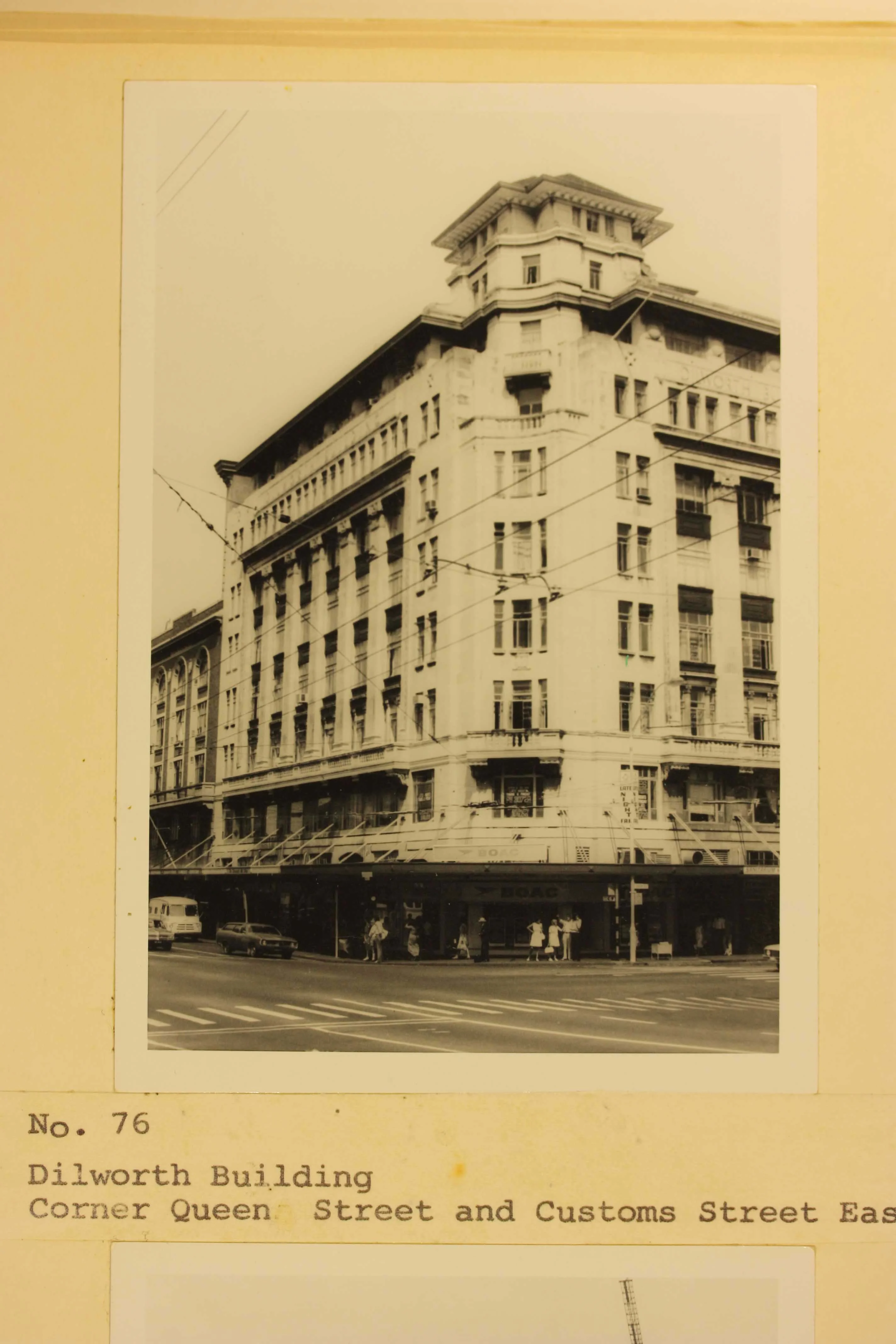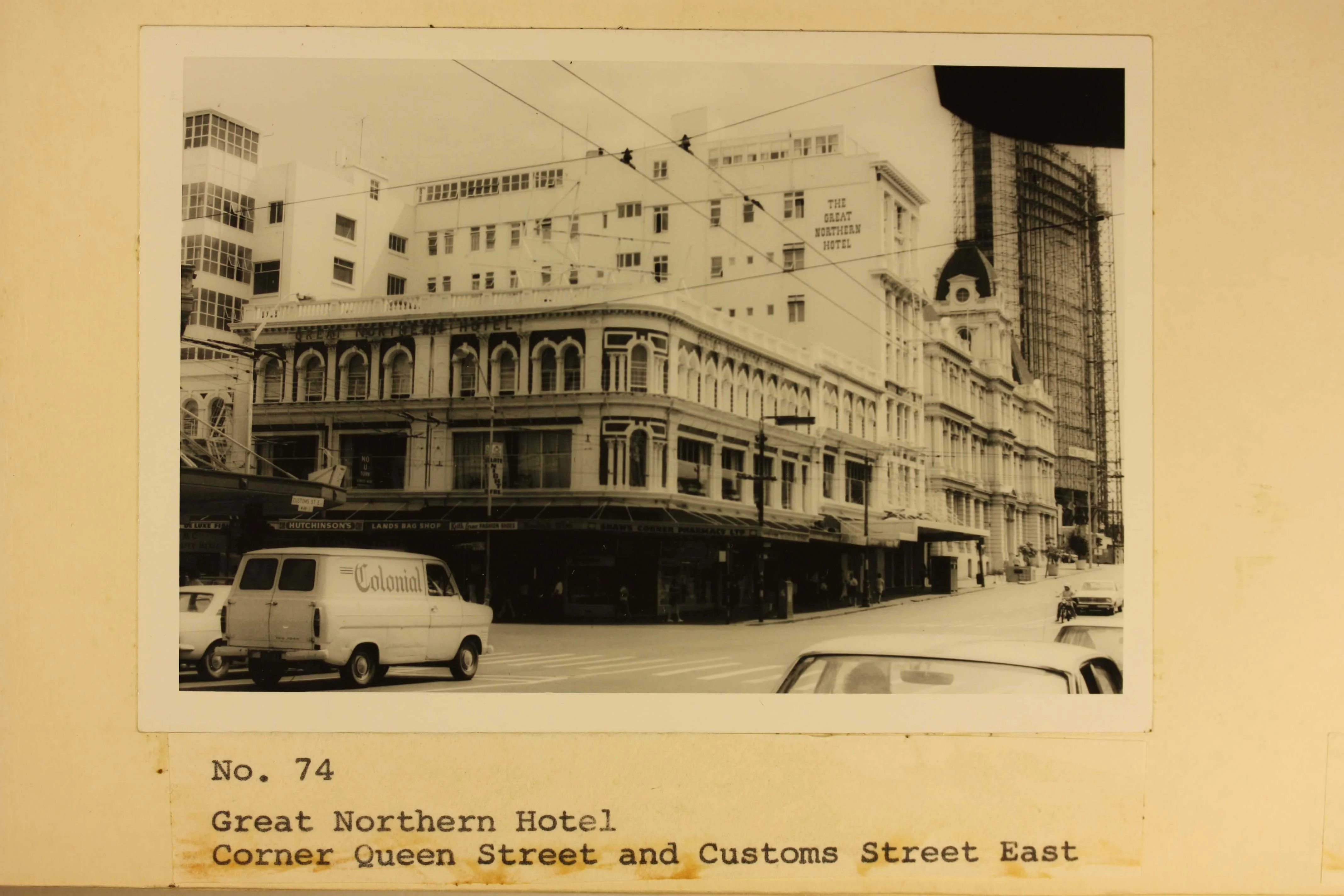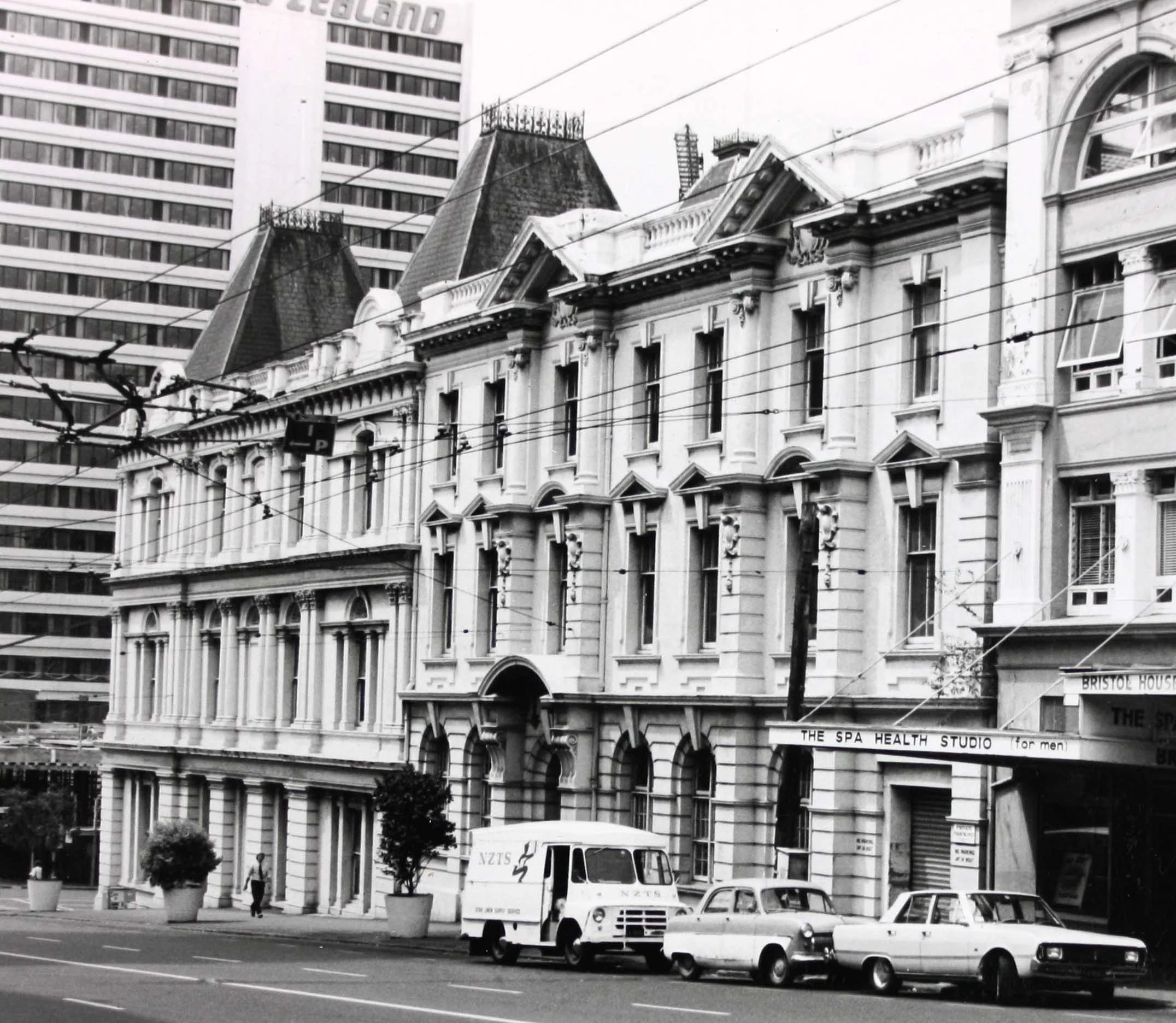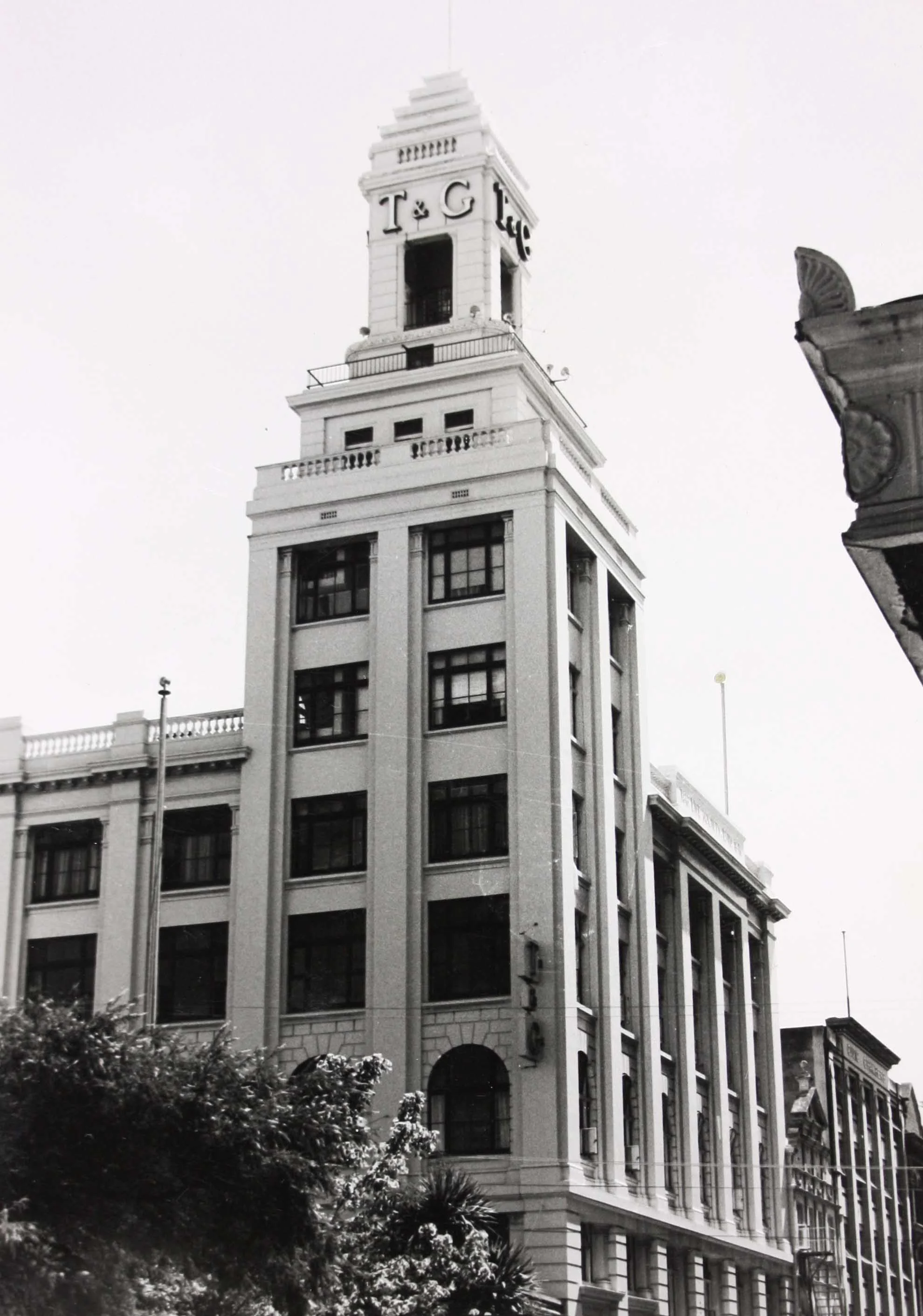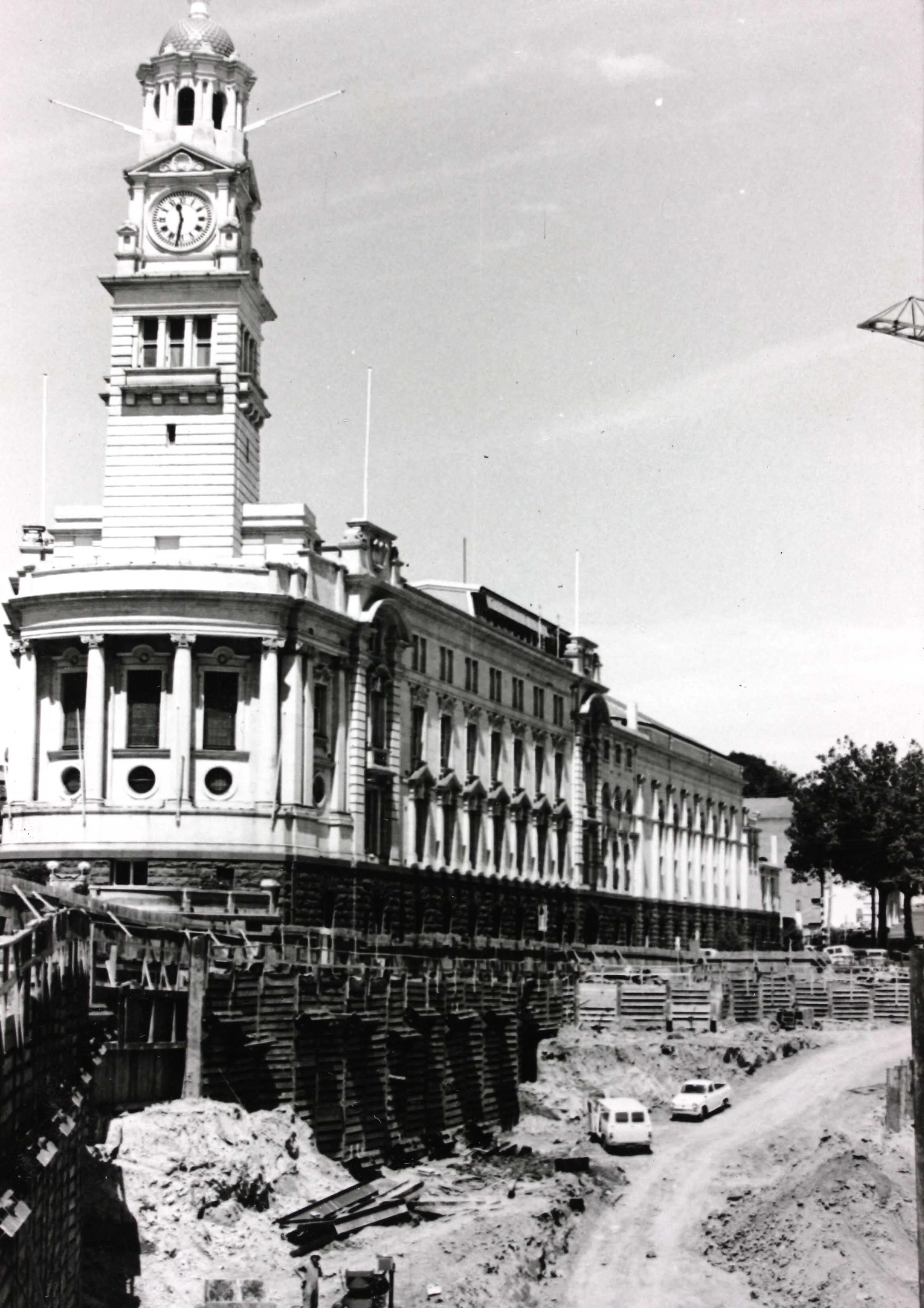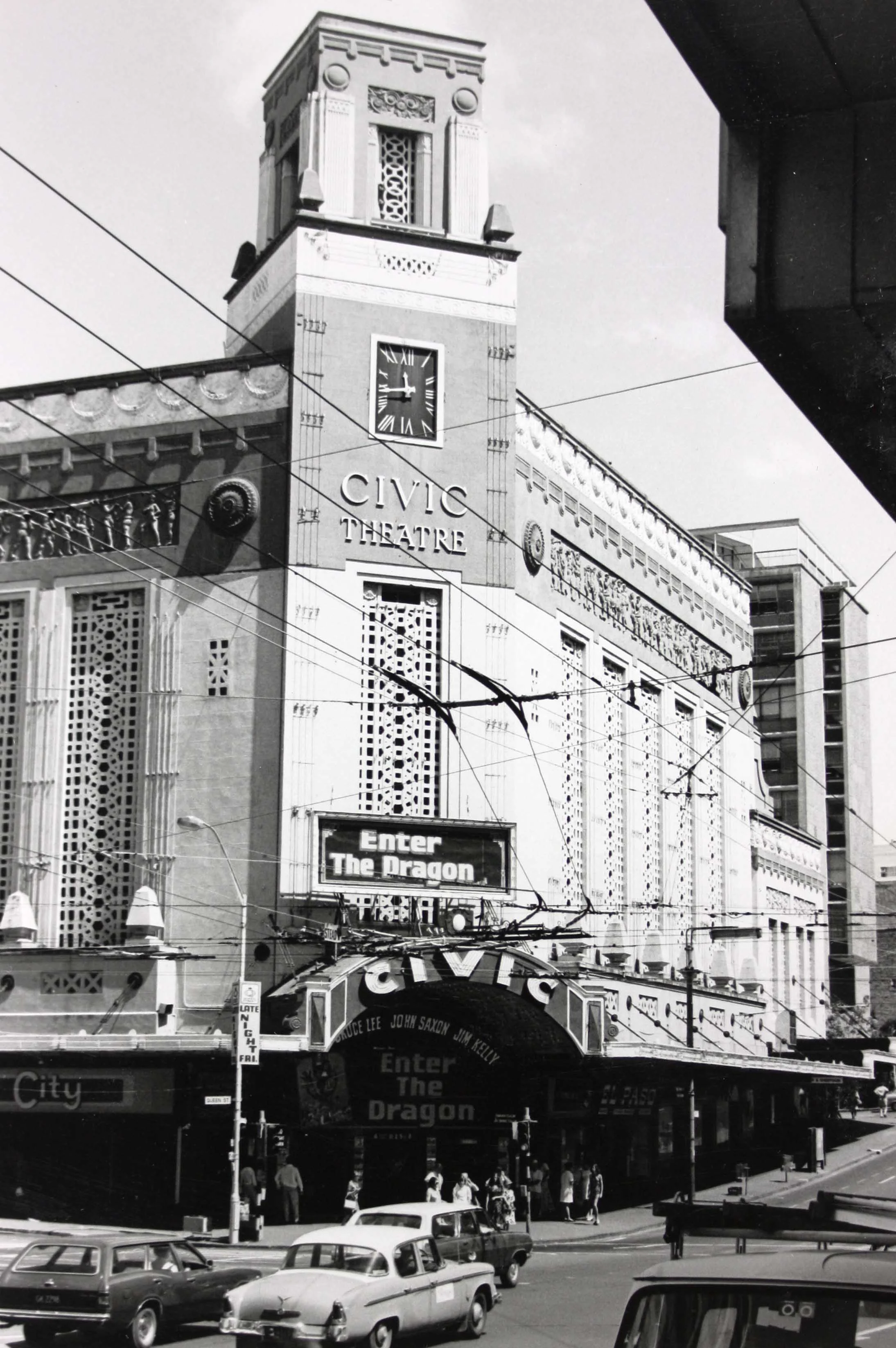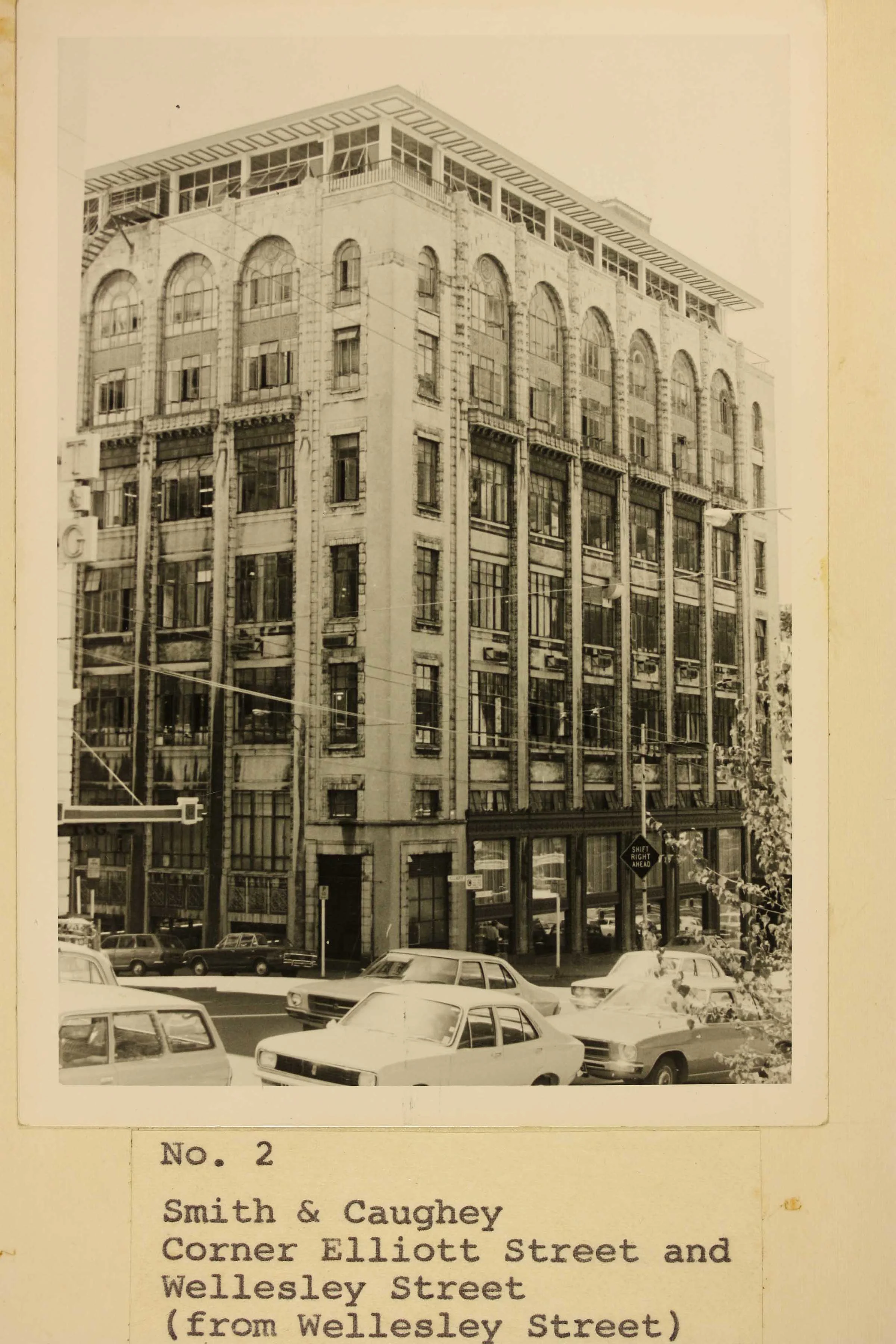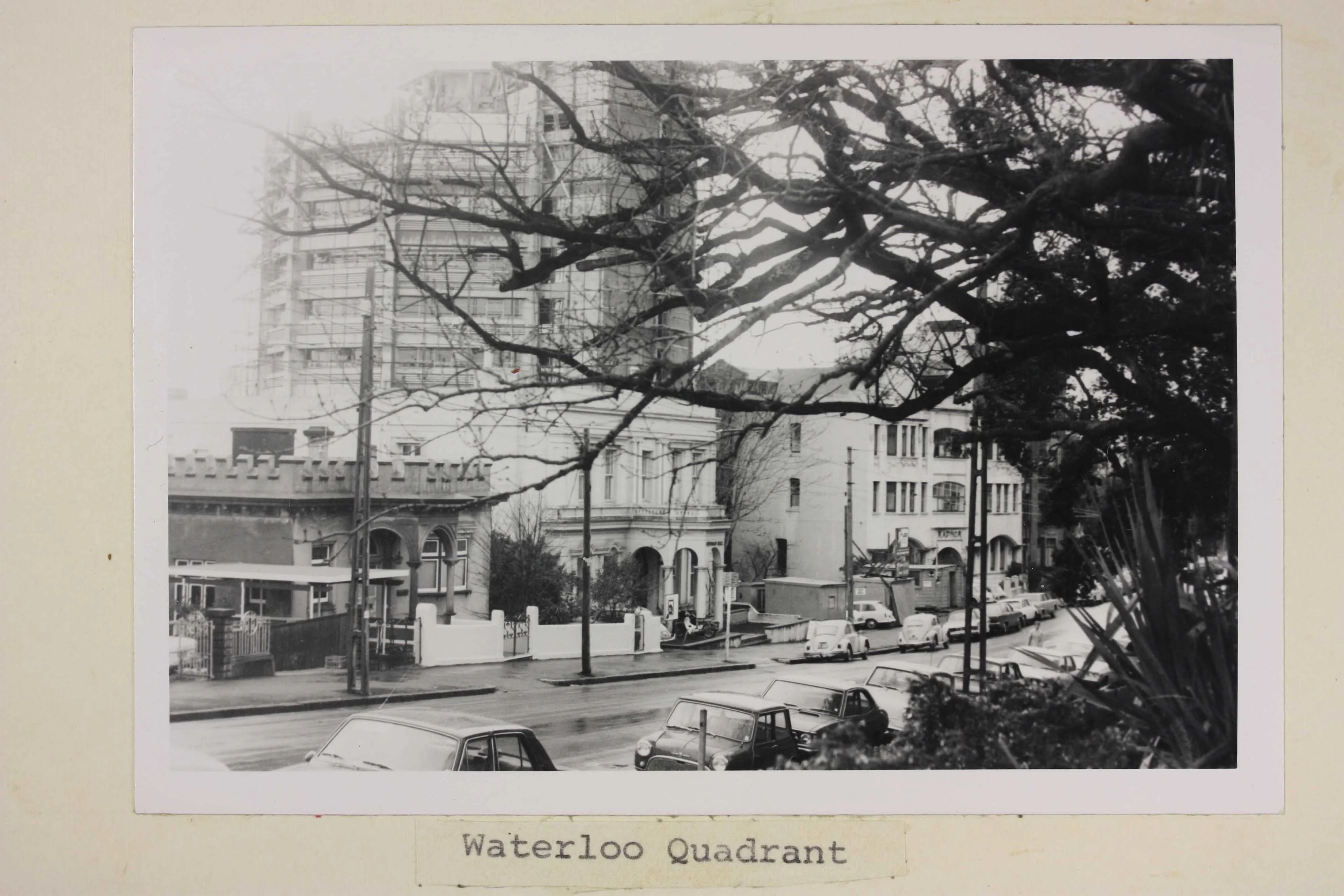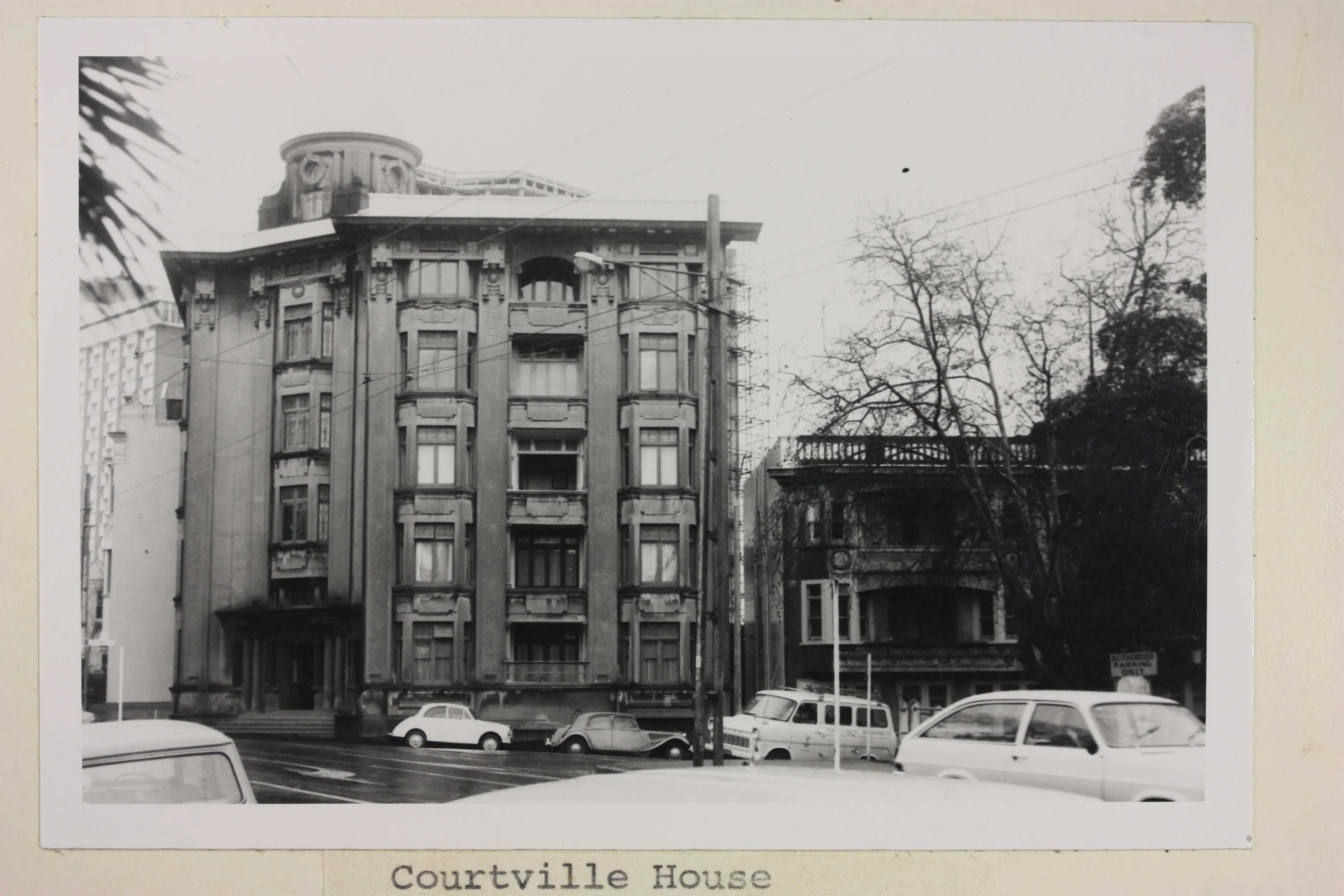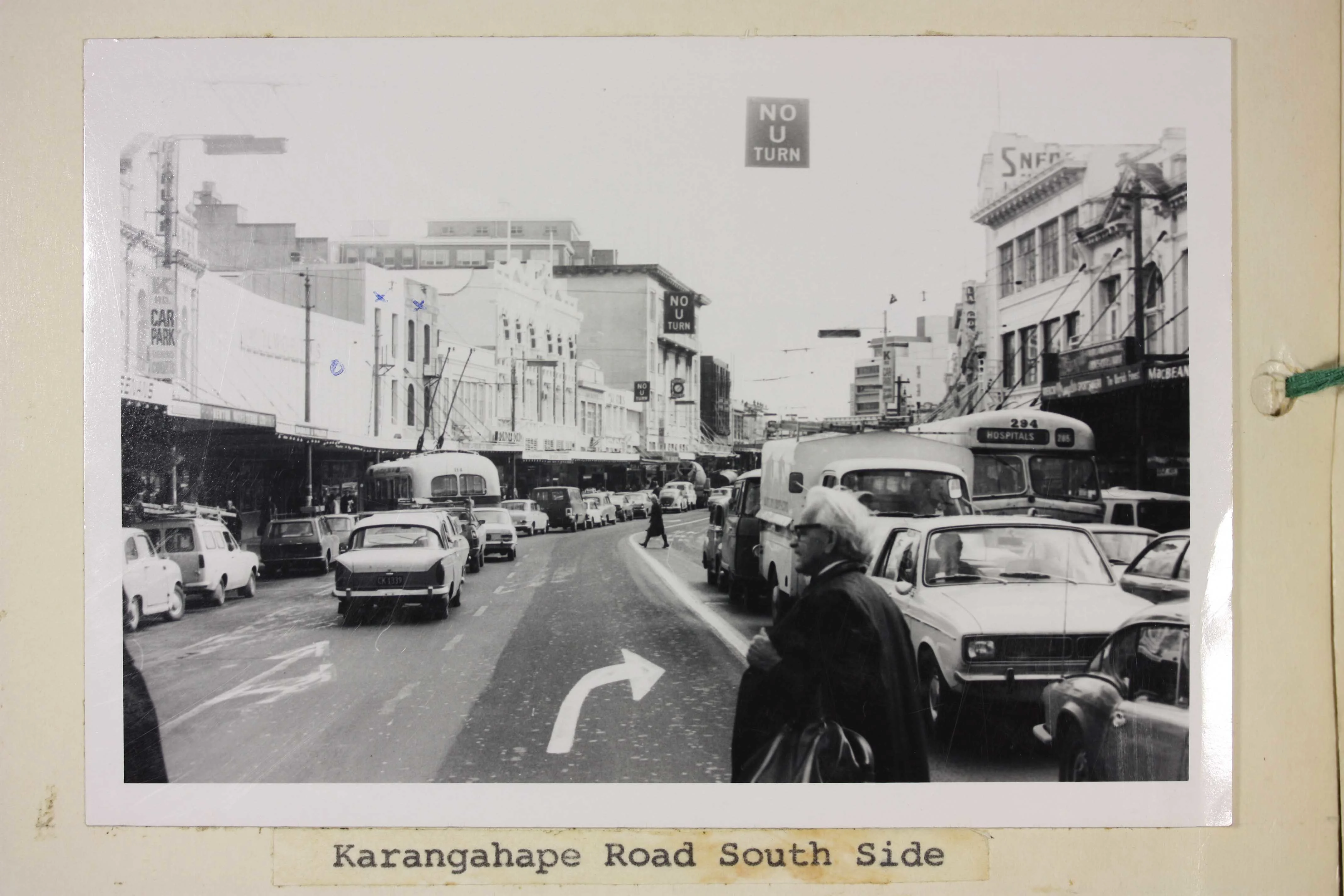Auckland Underground
The need for improved Auckland public transport occupied civic minds for decades. Various reports and plans produced from the 1920s to the 1970s include photographs of buildings potentially threatened by the construction of underground rail lines. These archives can be viewed on request in the reading room at our Auckland branch.
Reports produced during the last century with a view to improving Auckland’s transport systems include:
In the 1920s the Merc & McLelland Report (mentioned in BABJ A680/75)
The 1949 Halcrow & Thomas Report (BBAD 1054/991a)
The 1965 De Leuw Cather Report (summary report in BAEI 10003/356c)
Detailed planning and investigation work was undertaken in response to each of these reports.
In 1928-1929 detailed plans were drawn up for a rail link known as the Auckland Morningside deviation. The route began on the main trunk line station on Beach Road, and then went underneath the central business district to Morningside on the North-Western route to Kumeu. In 1946 RH Packwood, Auckland District Engineer wrote “The Morningside Deviation was first projected over 30 years ago” and “The existing passenger station [at Beach Road] was sited ….with the Morningside Deviation in view.” (BAEI 10003/269g)
Following the 1949 report, a Master Transport Plan for Metropolitan Auckland was developed by the Auckland Regional Planning Authority. The priority for railway construction under the plan was the Auckland Morningside deviation. This would take a similar, but not identical, route to the 1928/29 plan. During 1952 and 1953 an investigation of buildings along the proposed route was undertaken looking at condition, type of foundation and value.
In 1968 an Auckland Rapid Transit [ART] committee was formed to investigate railway solutions to Auckland’s transport problems. Detailed planning was done and investigations completed. It was decided that the priority was for a city underground line to be constructed in two phases: Auckland mainline station to the Civic Centre first, then under Karangahape Road to Newmarket (a similar route to the Auckland Morningside deviation).
Again, as part of the investigations, photographs were taken of some of the buildings along this route. There would be a system of bus services linked to the rail services, trains would run with a minimum off-peak frequency of ten minutes, and fares would be based on a zone structure, with ticket transfer between bus and rail. The ART was disbanded on 31 March 1976.
This is a selection of images taken from the records of these three schemes. The majority are from the records of the former Auckland Rapid Transit organisation (A680). The 1953 photographs are in schedule number order within each file [sch.]

